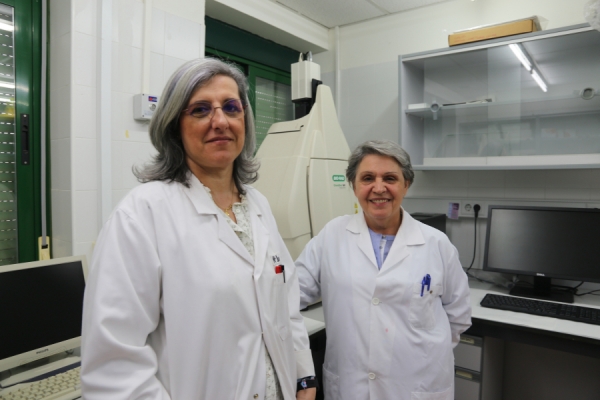People are exposed daily, through the environment and their diets, to external substances that can be harmful to their health. Metals and the residue of pharmaceuticals, for example, in high doses, contaminate water and food, creating mixtures where they can interact, with this increasing their individual toxicity.
Analyzing the effects of environmental pollution on organisms is essential to develop regulations establishing maximum doses of these pollutants for people. But, what about mixtures of pollutants? What happens when, even when faced with accepted doses, the different compounds interact with each other?
To understand the health effects of exposure to these "cocktails of contaminants," a team from the Biochemistry and Molecular Biology Department at the University of Cordoba, comprised of Nieves Abril, Paula Huertas, María José Prieto and Juan Jurado, evaluated, in mice, the toxicity of a mixture of contaminants that is very common in the environment and that accumulates along the food chain: a combination of metals (arsenic, cadmium, mercury) and drugs (diclofenac, flumequine).
In order to determine how these compounds interacted with each other, "we studied the controlled exposure of mice to this mixture and analyzed how it affects the proteins in the liver; that is, how their liver proteostasis changes when ingesting these mixtures of contaminants for two weeks," explained Professor Nieves Abril.
Their conclusion is negative: the cocktail effect creates synergy between these compounds, doing increased damage to health increase when the compounds act together.
"We used a massive protein detection technique (shotgun proteomic), which allowed us to compare how the proteins of the group exposed to the mixture of contaminants were altered compared to the control group," April explained.
Of the proteins affected, they selected 275 as sentinels to verify what was changing and, after computer analysis, they were able to determine the metabolic pathways that were altered and their consequences for health. These analyses revealed a disproportionate defense response having a contrary and harmful effect on the system.
The researcher stressed that "although these pollutants generated oxidation in the cells separately too, when they acted together we found that the oxidation was so intense that all the antioxidant defense responses were activated continuously, without deactivating them, which ends up doing damage and causing many proteins to stop working." The analyses showed a sustained expression of the response mediated by NRF2, which is the regulator that sets in motion a good part of the antioxidant defenses, which caused a reducing stress.
Selenium as hope
The study also provides hope, as selenium could be a way to reduce the damage caused by exposure to these pollutants. A third group of mice were given doses of selenium, a mineral often found in vitamin supplements found in pharmacies, and proteomic analyses showed relief from the molecular damage done by the pollutants.
Selenium itself is an oxidant, but in low doses it activates responses in a controlled manner, predisposing the body to better defense. With the results of this experiment, which was made possible thanks to Research Support (SCAI) and Experimental Animals (SAEX) services, knowledge of the effects of the pollutants to which society is exposed on a daily basis has been expanded, and a way has been glimpsed to reduce the damage they producethrough the use of selenium.
Reference
Huertas-Abril PV, Jurado J, Prieto-Álamo MJ, García-Barrera T, Abril N. Proteomic analysis of the hepaticresponse to a pollutant mixture in mice. The protective action of selenium. Sci Total Environ. 2023 Aug 24;903:166558. doi: 10.1016/j.scitotenv.2023.166558


